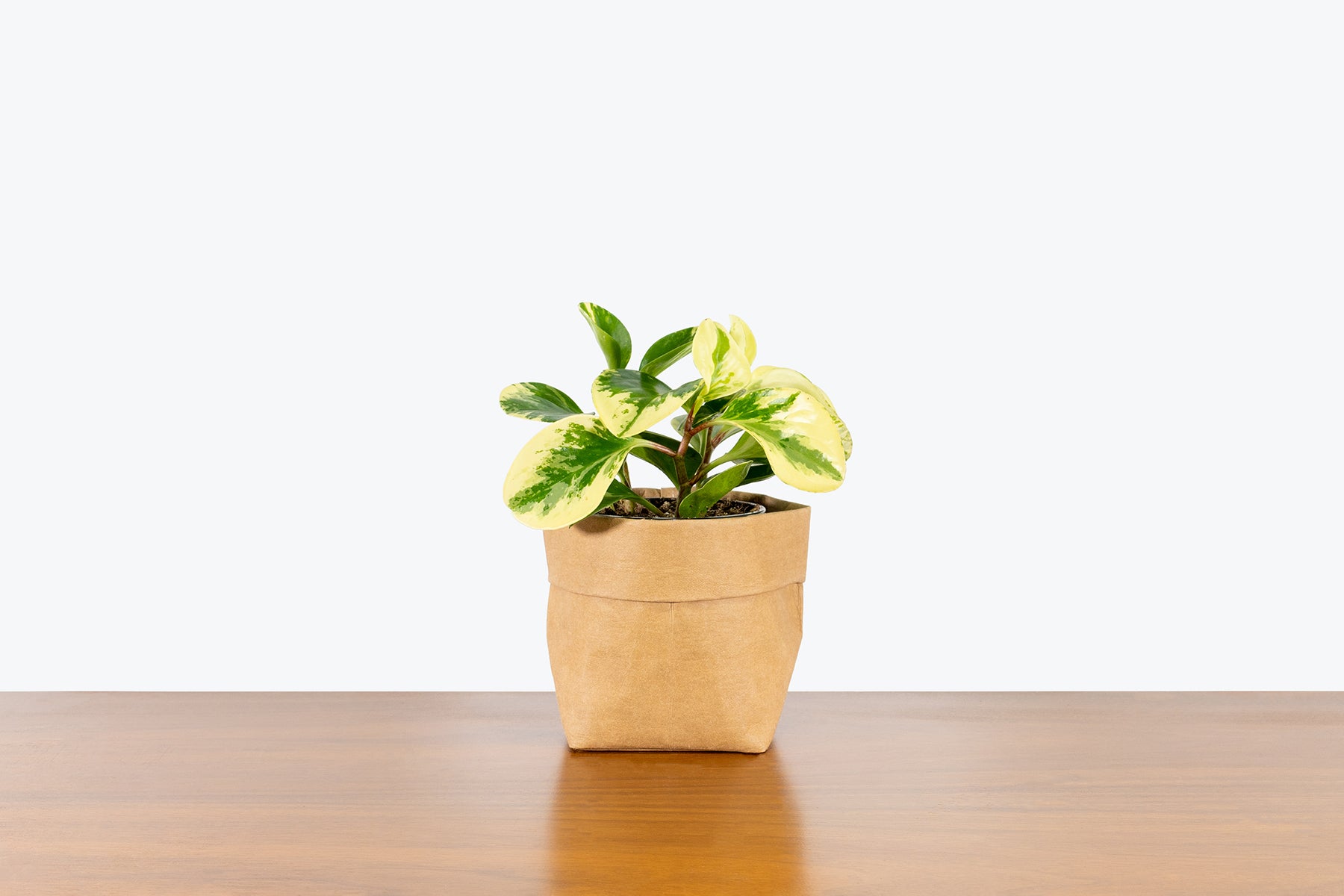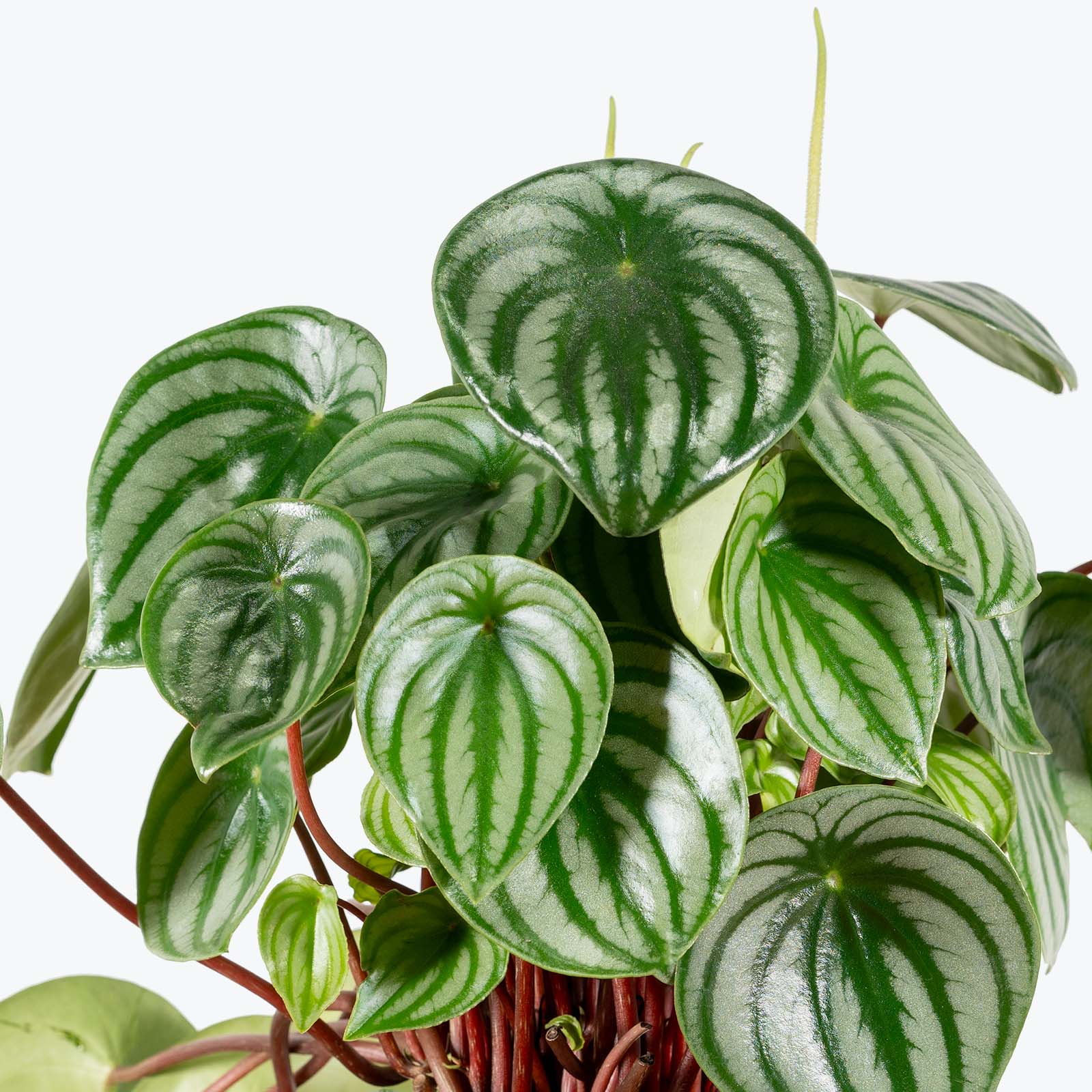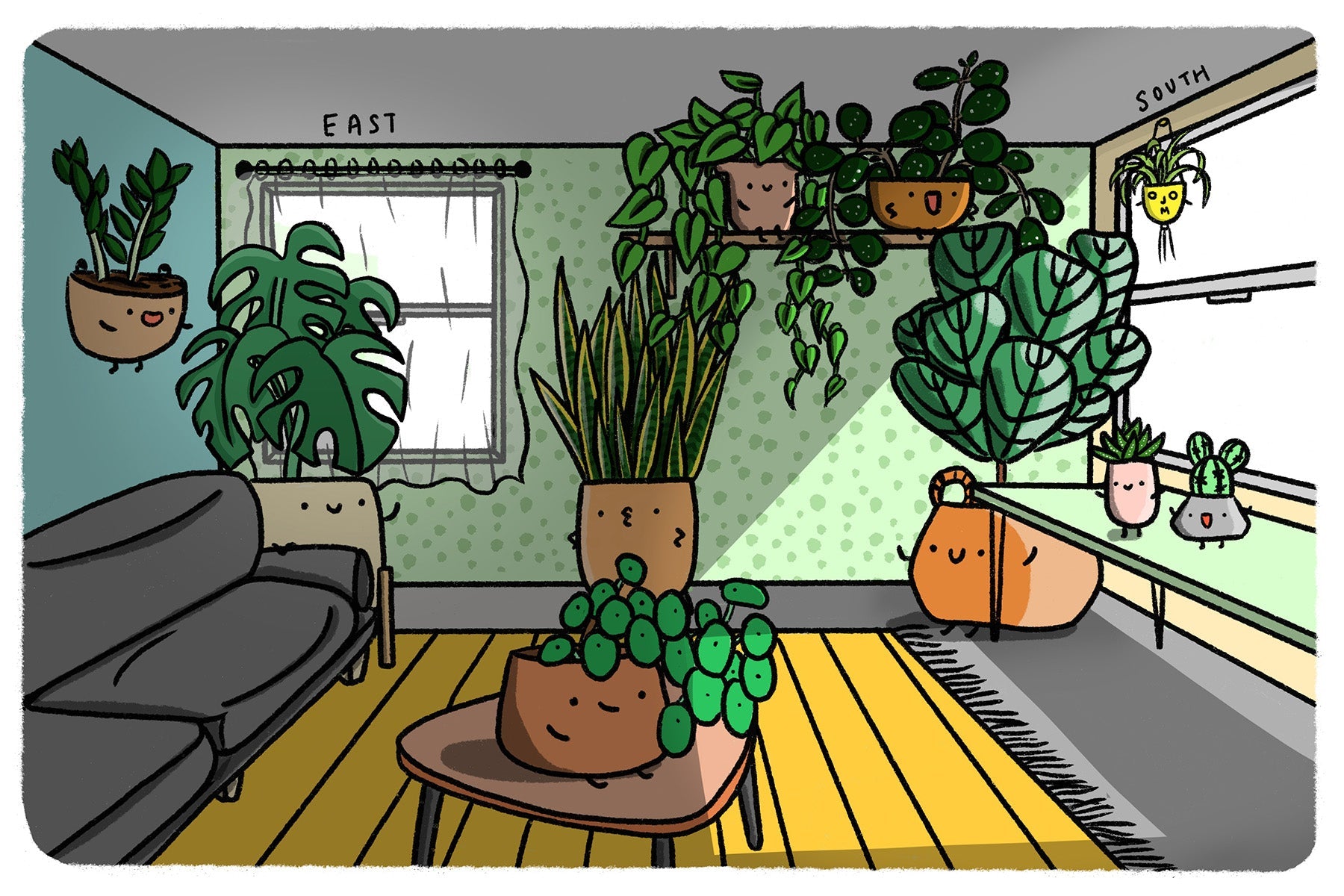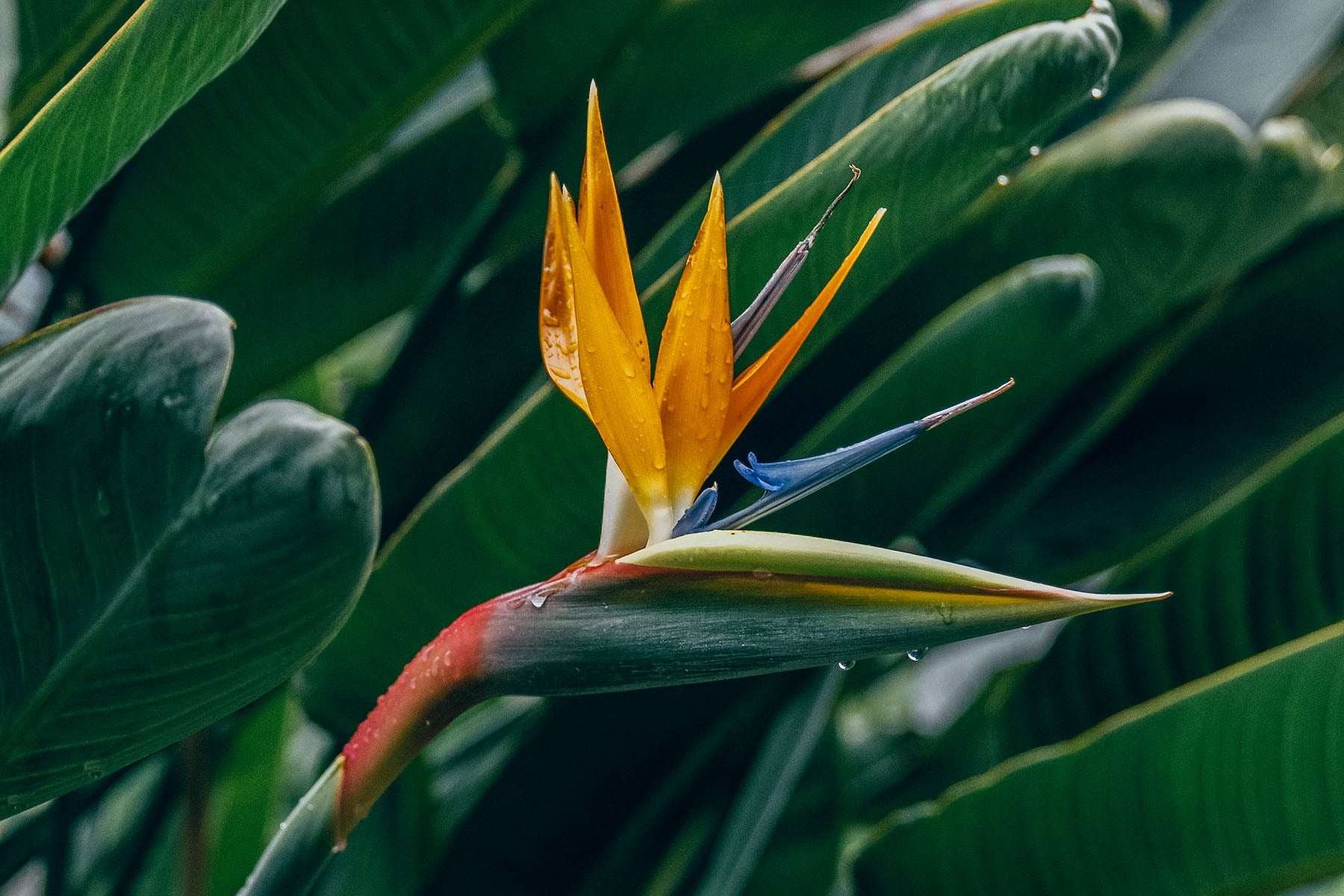
How to Take Care of Your Peperomia
Peperomia is a wonderful genus of plants within the Piperaceae family, native to Mexico, South America, and the West Indies. These tropical houseplants are incredibly diverse, with more than 1,000 known species, which becomes quite obvious when you start looking for one for yourself and find it difficult to select only one. They are all unique and beautiful, with leaves ranging from the smooth, large and round leaves of Peperomia Obtusifolia, to the delicate, tiny, and trailing leaves of the Peperomia Prostrata (i.e. String of Turtles), from the bold green stripes of the Peperomia Watermelon to the ridged, deep reds of the Ripple Peperomia. So no matter who you are and what you look for in a plant, there is definitely a variety out there for you!
△ 4" Peperomia Obtusifolia
Since their foliage is all so different in appearance, one way to identify a Peperomia, or Radiator Plant, is by their flowers, which are often green or white spikes of very tiny clusters of flowers. Although beautiful in their own way, their flowers are rather insignificant and the real beauty comes from their leaves, which is great news as flowers are a more difficult achievement.
Two things to highlight right off the bat when it comes to Peperomias are that they are slow growers but incredibly low maintenance, which is especially great if you are a beginner plant parent. Thankfully, the majority of their care is rather consistent across the varieties, but if there is anything special of note to a specific species, we will be sure to point that out. As long as they are receiving the light levels they need, as well as the water they need (be careful not to overwater!), they will be happy and will provide you with lots of beautiful growth.
Now, let's get into their care so that you can collect them all!
Light Requirements
One thing every variety of Peperomia cannot handle is excessive, direct sun. As long as you avoid prolonged sun exposure and any dark corners of your home, your plant can essentially go anywhere else! Overall, the majority of plants in the Peperomia genus prefer medium to bright, indirect light. Certain varieties will need more light than others but I will specify which varieties those are throughout this care guide.
△ Peperomia Raindrop Leaves
Remember that plants will grow based on the light that they receive, that applies to Peperomia as well. The brighter light they get, the more compact and full their growth will be, as well as growing at a faster rate than a plant in lower light conditions. These lower light conditions will most likely cause the growth to be "leggy," meaning their leaves will be more spaced out and new growth less compact.
Now, let’s outline the lowest light (i.e. medium light) conditions that your plant can handle:
- A couple meters back from a large South, West, or East-facing window
- Next to a South, West, or East-facing window that is facing a courtyard or is blocked by a nearby building
- Directly next to a North-facing window
📋
The varieties that can best handle these conditions would be the following:
Peperomia Obtusifolia (the variegated variety will need slightly more light than the green variety to support its colouring), Peperomia Amigo Marcello, Peperomia Rosso, Peperomia Piccolo Banda, Peperomia Frost, Peperomia Napoli Nights, Peperomia Angulata, Peperomia Mini Watermelon, Peperomia Ripple (the pink and cream variegated varieties will need more light than the rest), Peperomia Watermelon, Peperomia Pixie, and Peperomia Hope.
As for ideal lighting conditions to keep your Peperomia's foliage perky and beautiful, place your plant in one of the following lighting options:
- Next to, or close by, a large South, Southwest, or West-facing window that has sheer curtains for some bright, indirect light (remember, they cannot handle full sun so the curtains keep the leaves from getting burned)
- About 3 ft. away from a South, Southwest, or West-facing window without curtains
- Directly next to a North or East-facing window as the morning sun is not damaging like the afternoon sun is
The varieties that can best handle these conditions would include all of the previously mentioned Peperomia as well as Peperomia Ruby Glow, Peperomia Wolfgang Krahnii, and Peperomia Prostrata, or String of Turtles! These are the more succulent varieties of peperomia, meaning they will need brighter light to keep their growth happy and compact. Another thing to remember: the more vibrant colouring or variegation a plant has in its leaves, the more light it will need.
△ Peperomia Watermelon Leaves
🍉
Peperomia Watermelon will be happiest in medium to bright light. Avoid letting the sun directly shine on the foliage because, if given too much light, the colours and patterns will fade. On the flip side, if they do not receive enough light, the leaves may become a darker green.
Watering Requirements
In the Spring/Summer months, when you notice that the top three-quarters of the soil is dry to the touch, water the plant thoroughly with lukewarm water until it is coming out of the drainage holes, generally every 1 - 2 weeks. The time frame between waterings all depends on the amount of light your plant is getting, so keep your plant's environment in mind when considering when to water. Ensure all excess water is dumped after watering so as to not let it sit in water for long periods of time as that can produce root rot. Peperomias are prone to overwatering issues so make sure you let the soil get a little dry before watering again.
💡
Varieties with thicker, succulent leaves will need less water than the thinner-leaved varieties, since they have more water stored in them.
In the Winter months, ease up on watering as plants tend to go dormant in our cool homes, so about every 2 weeks when the majority of the soil is dry. Wipe or dust off the leaves of the larger-leaf varieties more often in winter as well because that is the optimal time for pests to set up shop. If the soil isn't absorbing the water, try bottom-watering, where you set the nursery pot in a bowlful of water for about 30 minutes, giving the soil some time to absorb the moisture, then feel the top of the soil and if it is moist, remove the plant from the water!
△ Peperomia Hope Leaves
Overwatering, which leads to root rot, is the number one issue that Peperomia can experience if we aren't careful in our watering care. That is why it is so important to assess the light your plant is receiving before determining how much water it will need! This is also another reason that we stress that keeping your plant in a nursery pot and then placing that nursery pot into a decorative pot is the most effective way to go. If you ever feel as though you gave your plant a little too much water, remove the nursery pot from its holder and dump any excess water, which you should always do when you water.
🚨
Keep your watering routine stable for your Peperomia, as too much irregularity can shock your plant and cause them to lose their leaves! Any changes that need to be made, make sure to do so in stages so as to give your plant time to adjust.
This is also when you should consider whether the medium the plant is in is beneficial for it! Peperomia are epiphytes, meaning they can grow on other organisms and derive the moisture and nutrients from the air, rain, and water. Since this is how they survive in nature, consider the home they are in: Is the soil aerated enough? Does the soil absorb the water when it is watered? Is the pot too big for the plant?
Planting your plant in a soil medium that is chunkier, rather than dense, is the best way to go for these little ones. Usually, these types of soils would include orchid bark, perlite, vermiculite, or charcoal which do the job of aeration! We have a great option for you here: House Plant Potting Mix. You want to avoid perforating the soil manually too much to aerate the soil as Peperomias have such fine, sensitive root systems. When it has the aeration it needs, there will be much better air circulation in order for the roots to receive the nutrients and moisture that they require.
Humidity
Even though they can survive in our basic home humidity, they do prefer a warm, humid environment! If you are willing to spend the extra money and effort, here are some ways you can increase the humidity in the air around your Peperomias:
- Mist your plant every day to increase the ambient humidity around the plant (daily should be fine, if problems occur, check the list at the end of this article to find a potential solution)
- Place the nursery pot on top of a bed of rocks that are covered in water, which increases the ambient humidity in the air around the plant
- Purchase a humidifier and keep it around your plants to increase the humidity in the room
- Group your plants together in your home, which creates a humid microclimate in your growing area that will benefit all those plants.
Avoid keeping your plant near any drafts or very cool windows and doors, as they are extremely sensitive to temperature changes and dry, blowing air! Again, consistency is key.
Fertilizing
Peperomias are fairly light feeders and don’t require too much when it comes to fertilizing. It is best to fertilize once a month through the Spring and Summer months and then do not fertilize throughout the Winter. Just use a generic house plant fertilizer, at half strength, that any greenhouse, garden centre, or plant shop offers! Always make sure the soil is evenly moist before fertilizing any of your plants
Toxicity
Unlike the majority of houseplants, Peperomia are non-toxic to ingest, by both pets and people! Although it is always recommended to keep your pets and children from ingesting any houseplants, you can feel comfortable and safe having these beauties around your home in the potential case where someone feels like having a snack.
Common Pests & Problems
Although Peperomia are quite resistant to pests and don't experience too many issues besides overwatering, I want to go over a variety of potential problems and scenarios so that you are fully equipped to deal with whatever problems your plant could throw your way:
Overwatering:
Are the stems and leaves yellowing and mushy? Are you trimming off yellowing, dead leaves very often? If so, you most likely are experiencing an overwatering issue where the soil has remained damp for too long and caused the roots to rot. Remove some soil from the root ball, gently trim any rotted roots off with clean shears, and repot your plant into fresh, dry soil, giving one good watering, and then making sure to only water when most of the soil is dry.
Ring Spot:
This is a fungal issue that occurs on Peperomia leaves from too much moisture and humidity. Trim off any damaged leaves and hold off on misting your plant to see if that will stop the spread of this fungus
Fungus gnats:
These can happen with any houseplant. They appear when the air is dry and the soil stays wet, which is hard to avoid in our Winter. Solutions: a mix of apple cider vinegar with honey in a shallow bowl to catch them, mix one-part peroxide with four parts water and pour that through the soil to kill any larvae, or place sticky fly paper strips by your plant. We have a more extensive guide here
Mealybugs:
You will often see a sticky residue on the undersides of the leaves and clumps of white fuzz throughout the plant. Wash the plant off and allow the leaves and stems to dry off, then treat the entire plant (stems included!) with a Neem oil mix or a insecticidal soap spray you can get from your local garden centre or plant shop. You can read more about how to get rid of mealybugs here
Wilting or drooping leaves:
If this is due to underwatering, consider bottom watering as mentioned in the Watering section of this article instead of using a watering can!
Final Notes
Although Peperomias are not exactly complicated to care for, they definitely have certain aspects of their care regime that they require to be followed in order for them to be at their happiest! Just keep them in medium to bright, indirect light, water them when their soil is mostly dry, and leaving them in a smaller container rather than a larger one, as they would rather be root-bound than to have too much space. Being slow growing combined with being root-bound (leave them until you see a bunch of roots coming out of the drainage holes) means they rarely have to be repotted. When necessary though, only pot them up one size and do so in the Spring! We have a lot more information about repotting in our step-by-step guide, which we have linked here.
Another great thing about them is that they are incredibly easy to propagate! They make it very easy to share the love. This can be done in three ways:
Leaf Cuttings:
If you have a bushy variety of peperomia, cut off a leaf near the center of the plant leaving the stem attached. Cut the stem at a slope and dip it in a rooting hormone. Place the stem in a pot containing cutting compost and rooting hormone. Alternatively, the cut stem could also be place in water where a new plant should form overtime.
Stem Cuttings:
If you have a variety that is tall and upright, with thick stems, make a cut on a stem below a leaf, and stick the stem into the water. Roots will begin to develop after a few weeks and once they develop, transfer to soil and keep it moist.
Plant Division:
If your plant has multiple pups or offsets, feel free to remove them gently from the mother plant, keeping as many roots intact as you can, and repot it into an appropriately sized pot.
Once you get the basic care down, as with any other plant, they are a breeze to take care of and add beauty to any home. Good luck with your new little baby, or try one out if you have yet to experience one!










